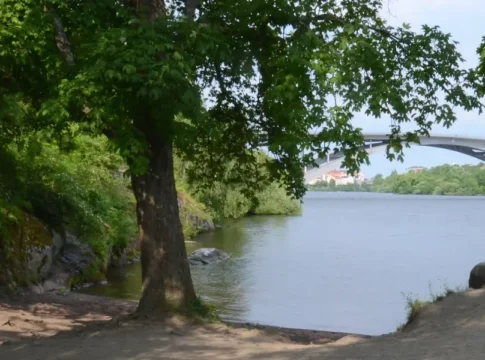Birka: The Viking Age Trading Hub
Birka, a UNESCO World Heritage Site on Björkö Island in Lake Mälaren, is regarded as Scandinavia’s first true urban settlement. Flourishing during the 8th–10th centuries, it became a major Viking trading hub linking Sweden with Europe, the Middle East, and Asia.
Visitors can explore reconstructed Viking houses, burial mounds, and archaeological artifacts that reveal Birka’s vital role in commerce, urban development, and the spread of Christianity in early medieval Scandinavia.


🌍 A thriving commercial center
Birka’s strategic location connected the Baltic Sea to vast trade routes stretching as far as the Byzantine Empire and the Abbasid Caliphate. At its height, the settlement supported 700–1,000 residents. Excavations have uncovered Arabian silver, Eastern European beads, and Chinese silk, exchanged for Swedish iron, furs, antler combs, and amber—proof of Birka’s place in a truly global network.
💱 Global trade and currency
By the 9th century, Birka’s bustling market used both Scandinavian coins and imported Middle Eastern dirhams, underscoring its international reach. Elite graves have yielded Finnish pottery and Baltic dress ornaments, highlighting the diversity of goods and the interconnected nature of Viking society.






🏰 Urban planning and defense
Recent discoveries have revealed new aspects of Birka’s infrastructure. In 2024, archaeologists uncovered a Viking shipyard and a 300-meter stake row in the harbor—likely part of a defensive barrier. Evidence of a protective moat further demonstrates Birka’s urban sophistication and military preparedness.
✝️ Cultural and religious significance
In 829 AD, Saint Ansgar established Sweden’s first Christian congregation in Birka. Richly adorned burial finds—jewelry, textiles, and ritual objects—illustrate how trade, faith, and social hierarchy blended in this early medieval town.
📉 Decline and historical legacy
By the late 10th century, Birka was largely abandoned. Scholars debate the causes, suggesting shifting trade routes, political changes, or land elevation that made its harbor less accessible. Many residents are believed to have moved to Sigtuna, the emerging urban center of the time.
Today, Birka and nearby Hovgården are preserved as UNESCO World Heritage Sites. Ongoing excavations continue to shed light on Viking trade networks, urban life, and cross-cultural connections, ensuring that Birka remains central to our understanding of Scandinavia’s Viking Age.





